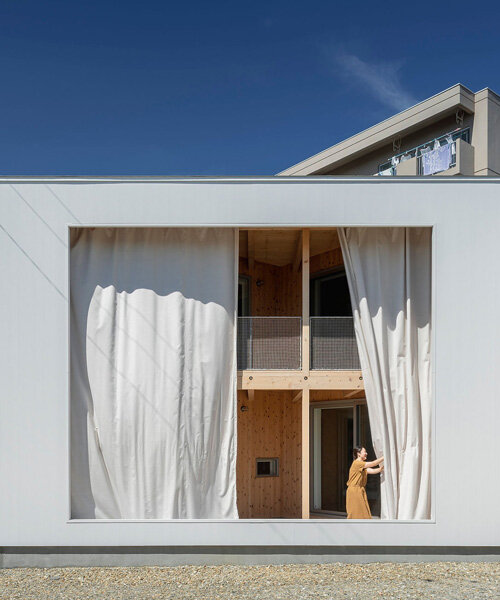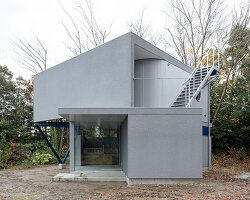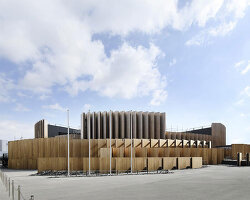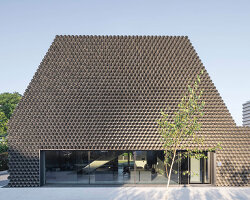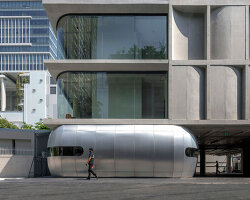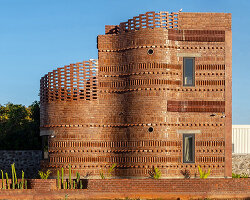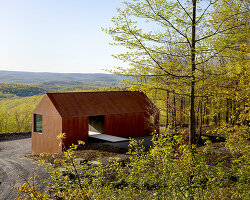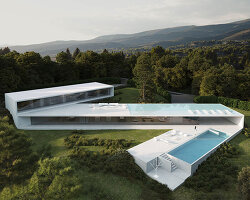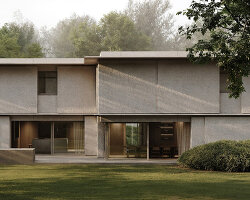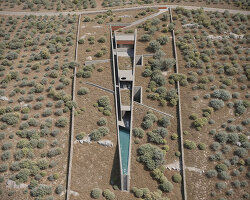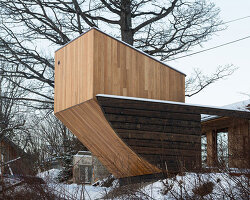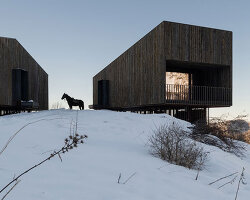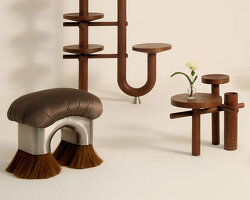a visual passageway between public spaces & private dwellings
Japanese practice Qukan’s ‘Opening Next to the Park’ comprises a series of transformational semi-external spaces that together foster a synchronous relationship between public and private realms. Located in a residential neighbourhood in Hokkaido, Japan, the minimal house perches on a quiet corner across from a small children’s park. Boasting a crisp white facade with simple timber accents, the project’s core feature is a large, curtain wall device that punctuates the eastern elevation and conceals a versatile, semi-enclosed transitionary space.
Made of tent fabric, the flexible wall spans almost the entire height of the two-storey home and is able to transform its ‘outer’ spaces into ‘inner spaces’ with one swift move, altering the character of the home in endless ways. With the curtains open, the outer living room facing the first floor exists like a veranda, and the patio on the ground floor acts as an inner garden. With the curtain closed, this transforms into a small, enclosed Japanese garden for the family to enjoy.
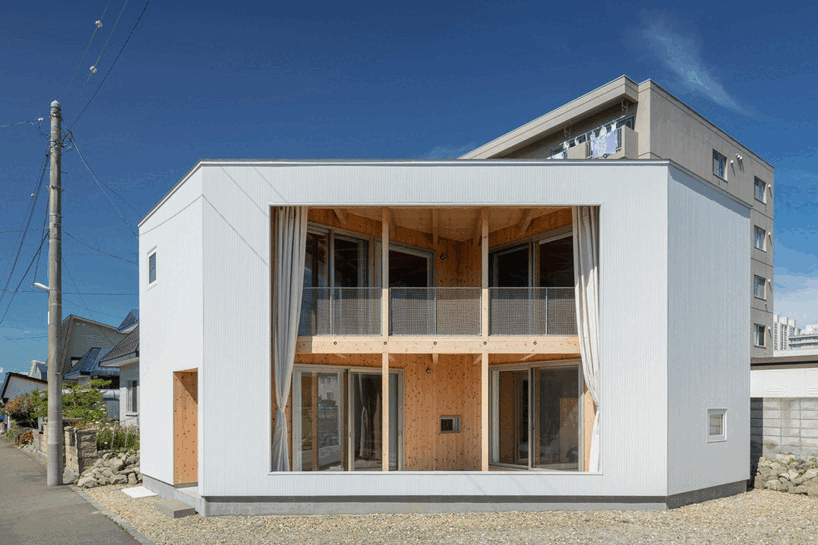
a large curtain wall made of tent fabric gives the home a flexible character | all images © Ikuya Sasaki
a curtain wall transforms qukan’s home with one swift move
With ‘Opening Next to the Park’, the team at Qukan seeks to avoid the typical disconnect between open, communal parks and the elevations of the private dwellings that encircle them. Without disrupting its surrounding natural and built environment, the house is able to become at one with its context while maintaining a sense of privacy for its inhabitants. Due to the strategic positioning of the home, passersby and visitors of the park are granted uninterrupted lines of vision, while simultaneously, inhabitants of the house are granted open views of the park without compromising their privacy.
Ensuring the home’s eastern elevation directly faces the park, the architects have opted for large curtains to maintain a dynamic enclosure instead of external walls. Within is a partially enclosed space titled ‘outer living room, inner garden’. Made of timber, this serves as a flexible threshold between the indoors and outdoors, as well as a visual passageway between the openness of the neighbourhood and the intimacy within the home. As a continuation of the tranquil interior, the passage further ensures optimal natural light and views of the adjacent park can infuse the home. ‘The exterior curtains and large openings in the elevation resemble the drapes of a stage in a park. The expression of the building, which shimmers with the wind, may bring a new and rich expression to the park,’ notes Qukan.
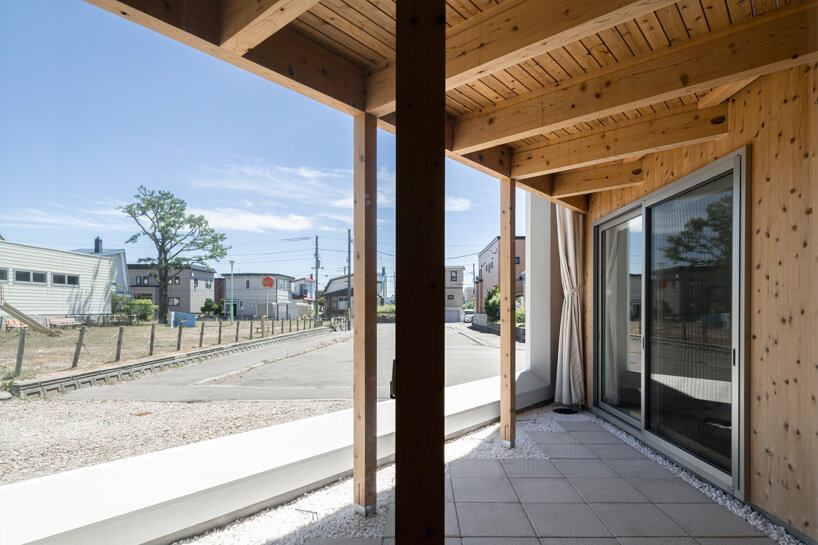
the transitionary verandah bridges the boundary between indoors and outdoors
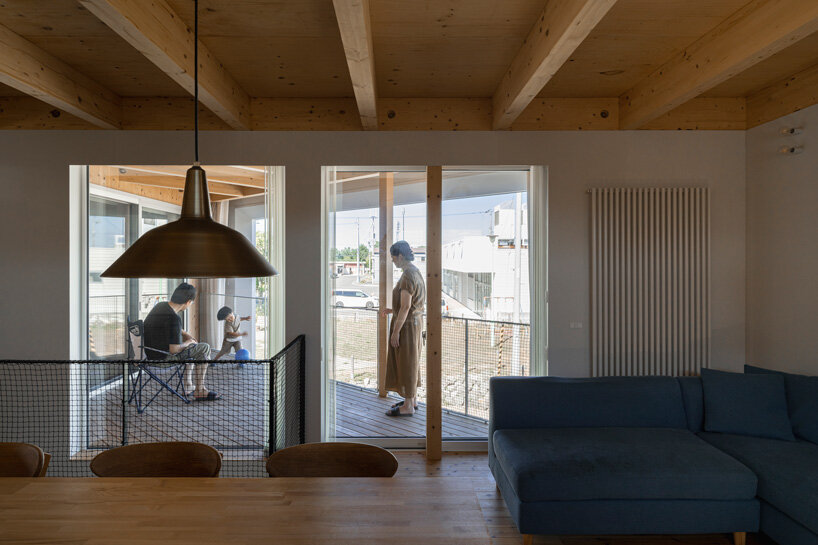
inhabitants are granted open views of the park across the road without compromising their privacy
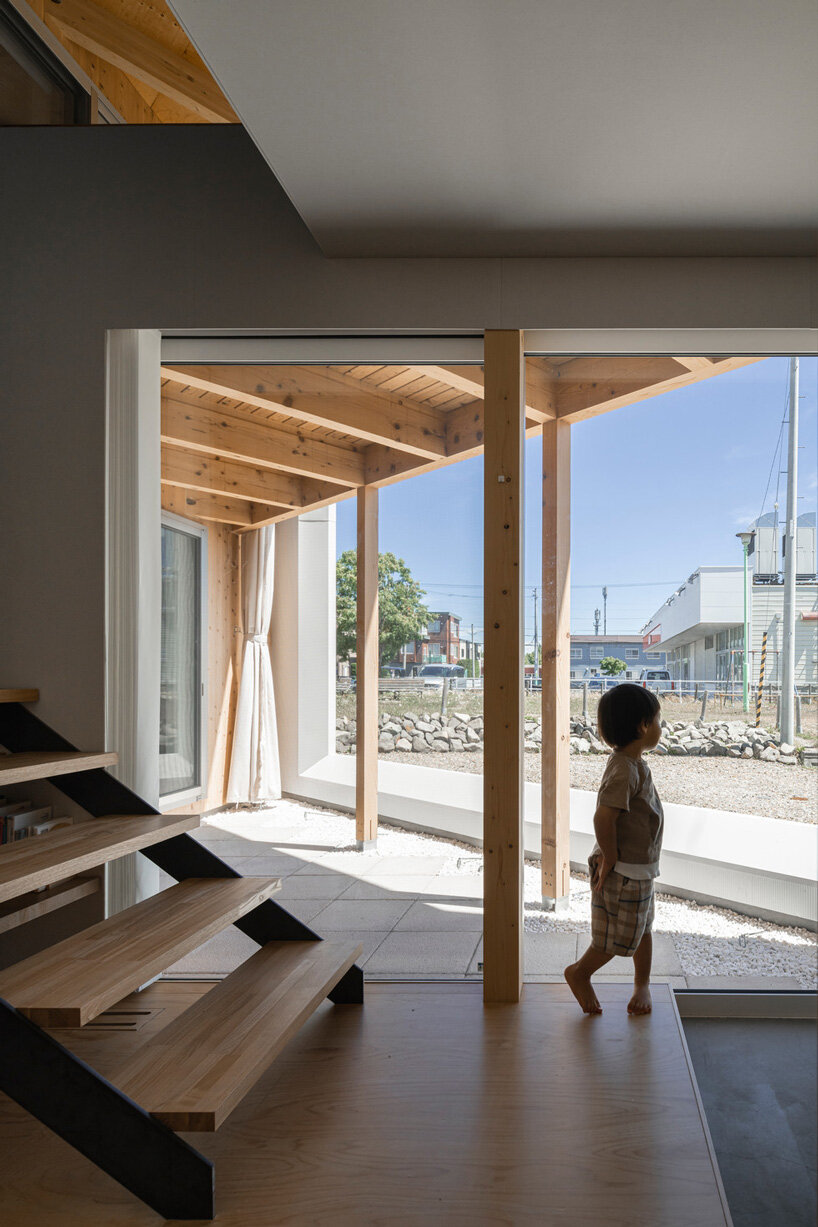
timber accents define the home’s enclosed and semi-open spaces
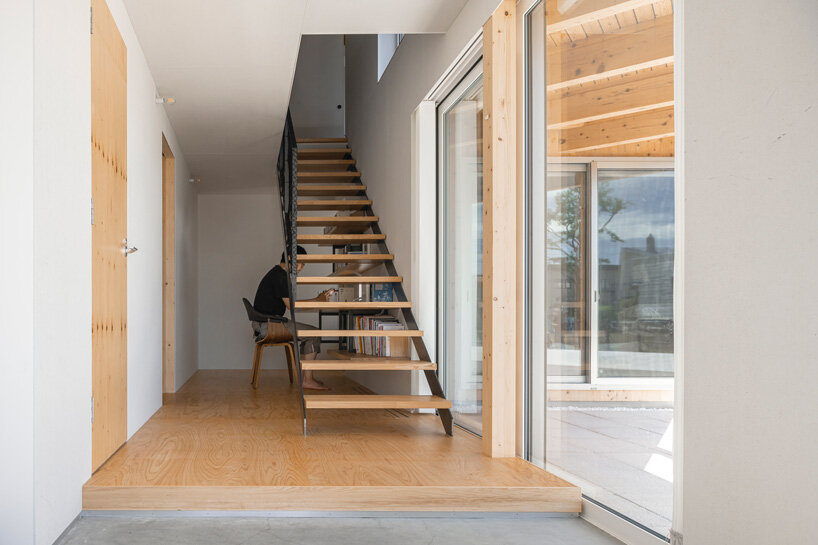
Qukan infuses the home with ample natural light
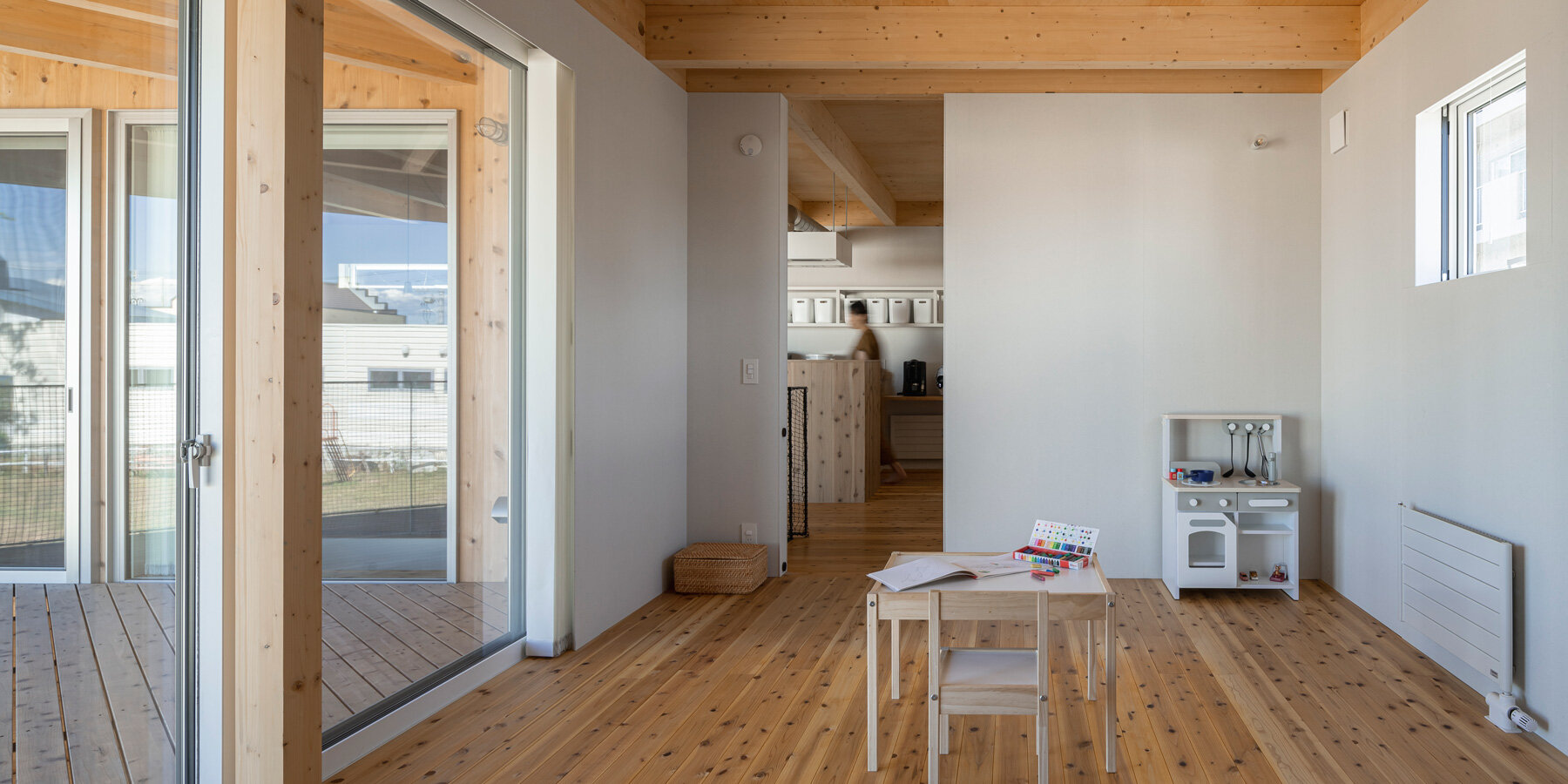
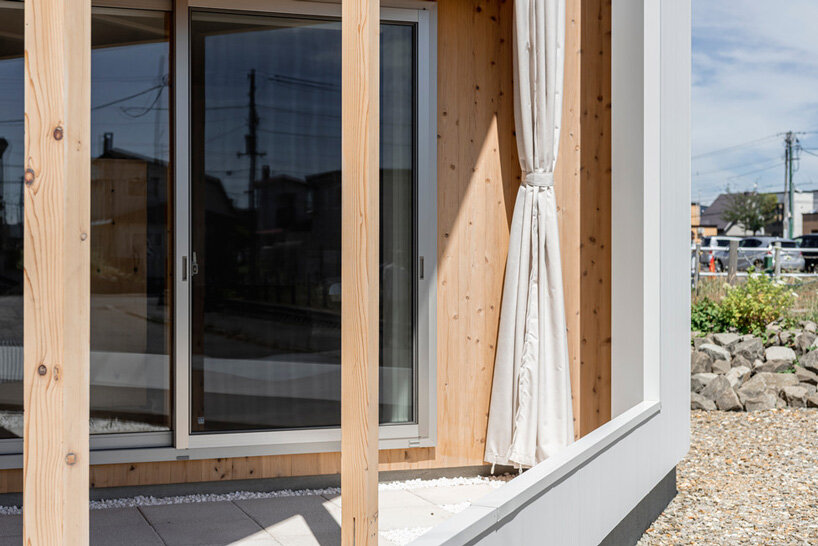
a visual passageway between the openness of the neighbourhood and the intimacy within the home
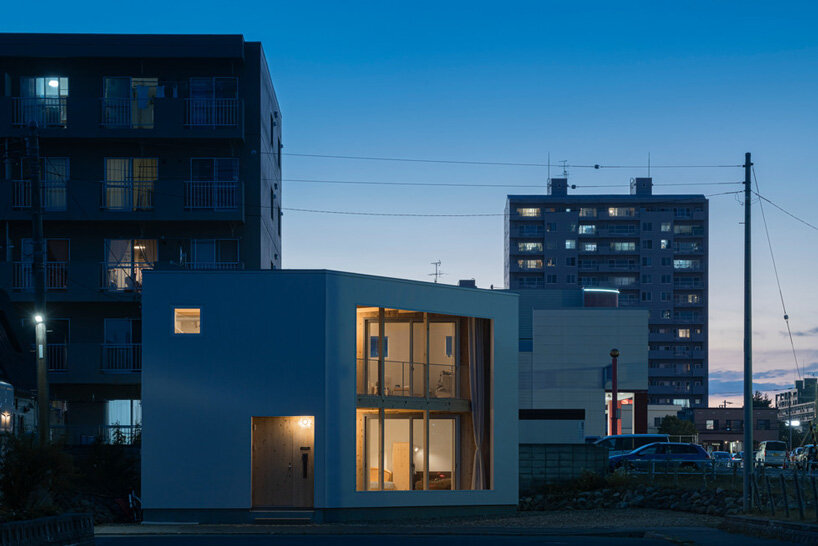
‘Opening next to the Park’ perches on a quiet corner across from a small children’s playground in Hokkaido
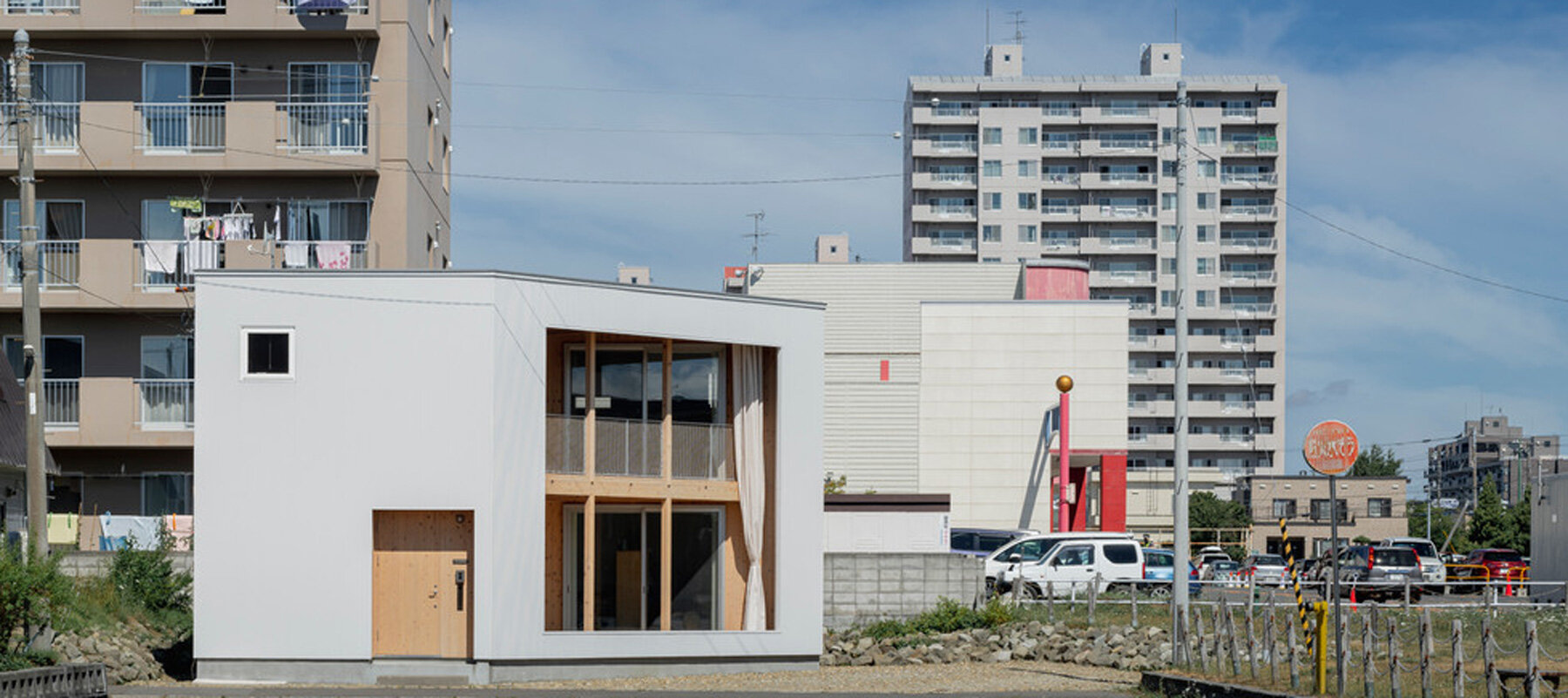
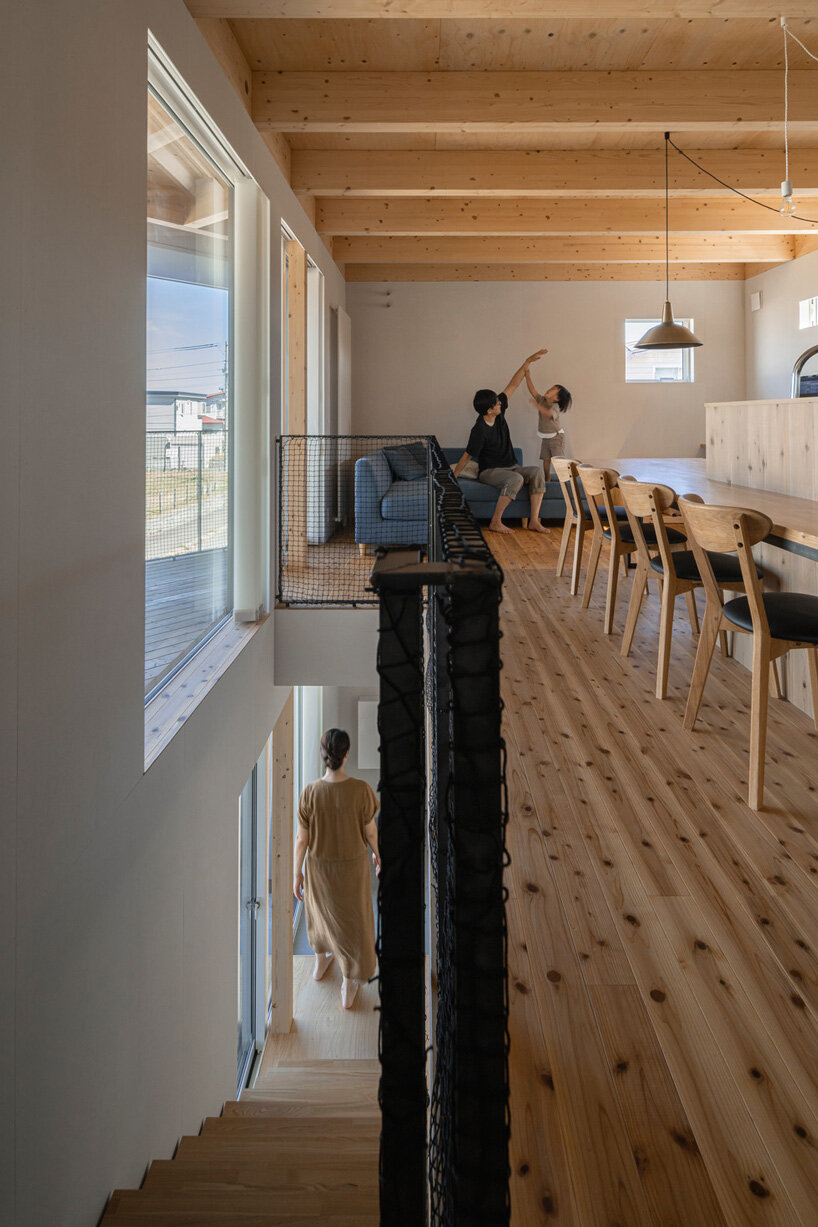
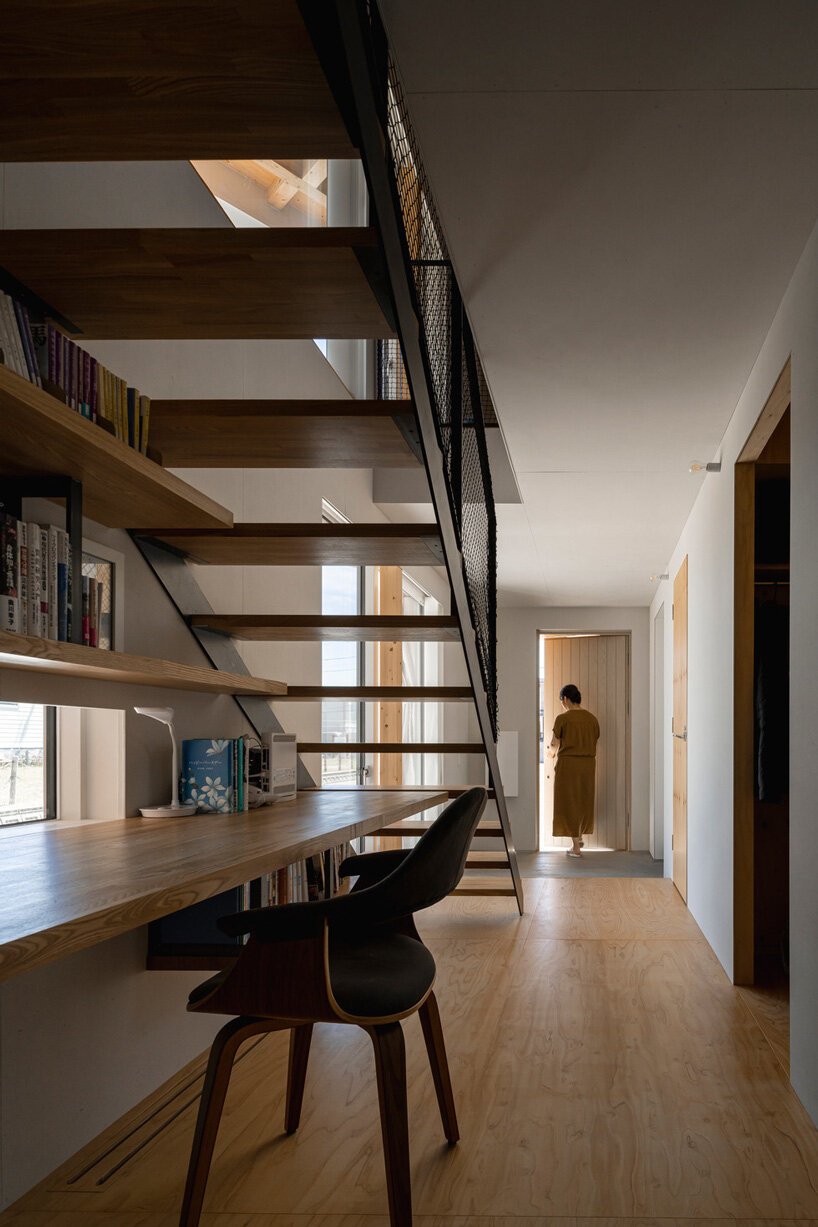
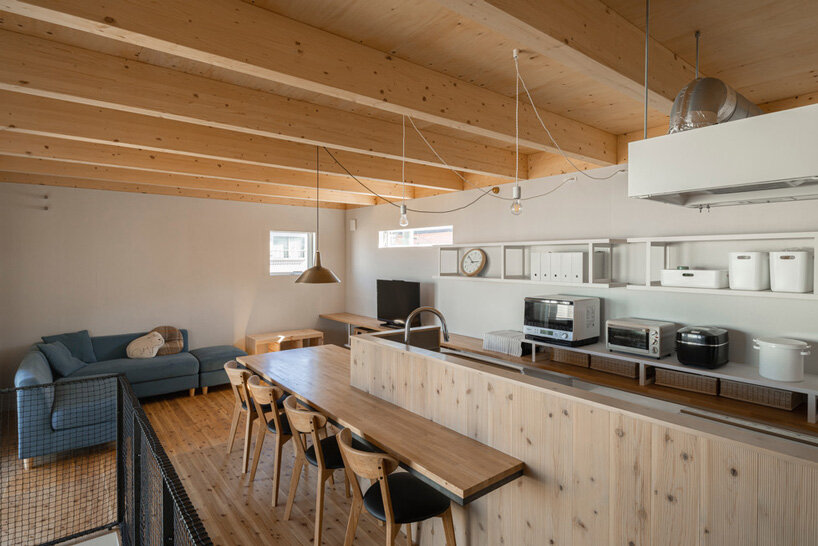
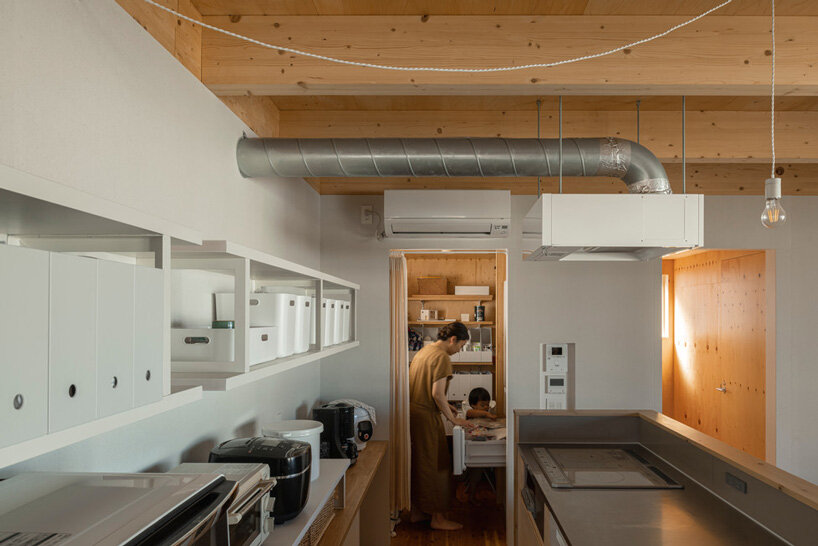
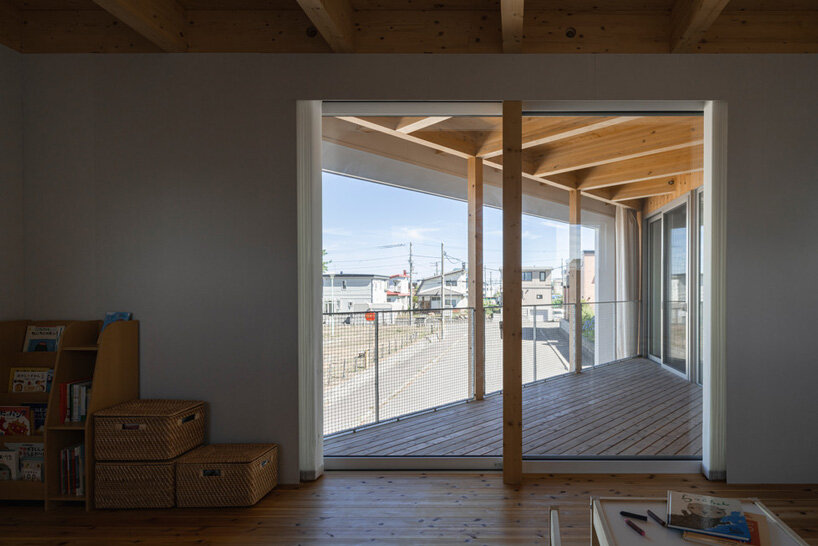
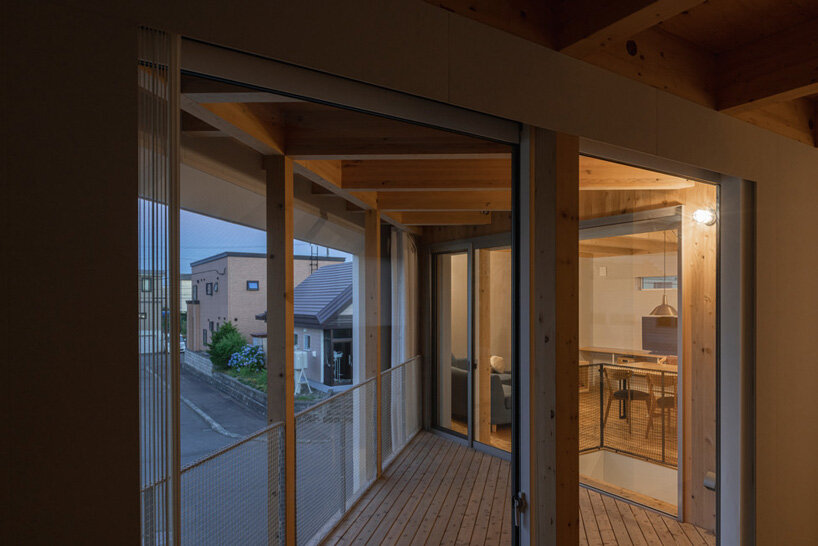
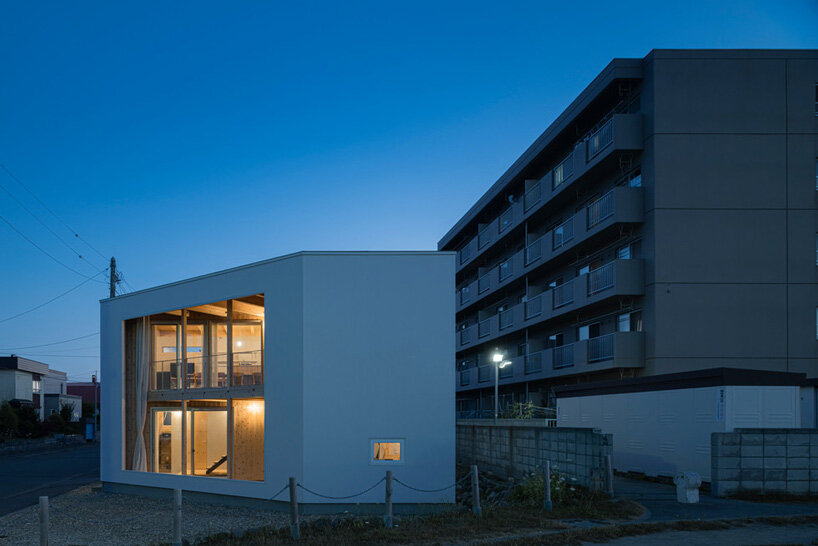
project info:
name: Opening in the Park
architecture: Qukan
location: Ebetsu, Hokkaido, Japan
photography: Ikuya Sasaki
